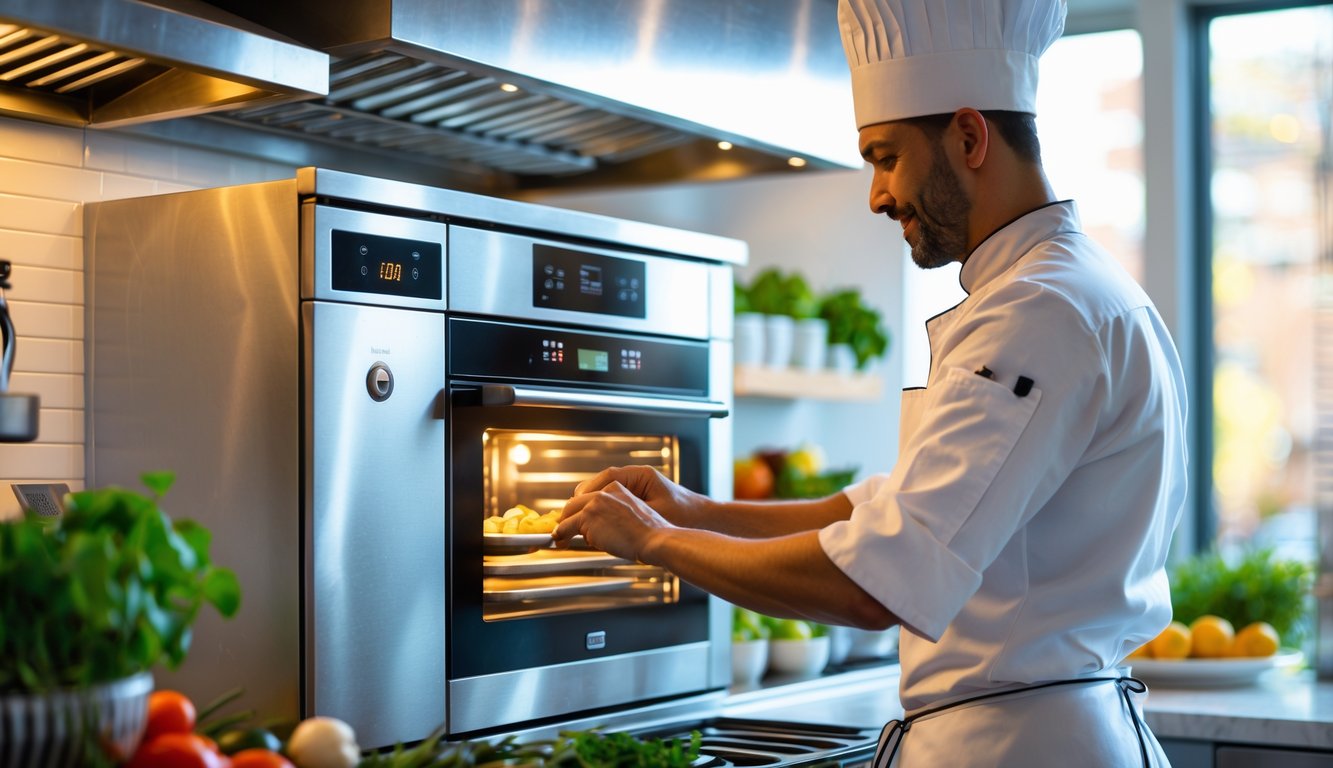
How Chefs Use Smart Appliances for Superior Results
What really drives me up the wall isn’t the tech itself, but how easily chefs let machines handle chaos—tweak temps, dodge human screwups, and meanwhile, half the kitchen can’t even text back. My chef friends swear by smart appliances for hitting timing and precision (and, yeah, avoiding yelling over a thermometer again). The first time I saw a combi oven run through a bake cycle, my brain short-circuited.
Automation and Artificial Intelligence
Forget waiting for a timer. This morning, I watched my oven rewrite its own cook profile after ten minutes with a lamb shank. The brand promised “sensor-driven AI,” and, weirdly, it worked. R&D chefs keep talking about predictive maintenance. Imagine your phone buzzing because the oven “sensed” a bearing was burning out. What?
Nobody agrees if smart kitchen tech solves more problems than it creates. Michelin chef Vivek Singh jokes his AI fridge judges his leftovers, but he admits automation crushes batch inconsistencies—less “oh no, the ribs dried out” when the machine adapts and the chef’s busy plating. Sometimes, the dishwasher gets stuck updating firmware and everyone just groans.
Here’s the real secret: most kitchen disasters are boring. Automation, AI, smart gadgets—they mostly protect you from your own forgetfulness. That, plus an oven that quietly fixes itself mid-bake, means way fewer ruined soufflés and “chef’s special” panic moves.
Connectivity and Wi-Fi
You ever stand in a kitchen, everything humming, and then—bam—Wi-Fi drops and suddenly your $10,000 oven’s just a shiny box? For what, so you can play “guess the firmware update” while your phone stares blankly? I mean, who decided we needed to run a data center between the walk-in and the dish pit? Bluetooth? Cute idea, until you realize concrete walls basically vaporize the signal. But, okay, when it works (big “if”), I’ve seen actual chefs tracking half their gear from across town, juggling prep lists and remote temp logs like they’re piloting a drone strike.
One time, I watched a pastry chef log in from home, spot a fridge compressor blip, and save a whole batch of truffles from melting into sadness. Appliances start texting status reports, running self-checks, updating recipes while you’re still pouring coffee—nobody’s fiddling with dials anymore. Then, of course, 2am rolls around and there’s always some ancient device that acts like the last four years never happened, so you’re crawling under counters, cursing, and praying for a backup router. My running joke? Chefs need to budget for butter, routers, and maybe an exorcist.
Does anyone even track this stuff? Whatever. I read somewhere (Smart Kitchen Insights, maybe?) that 58% of chefs use Wi-Fi ovens weekly—not because they love tech, but because it gets them out on the line instead of babysitting a steam cycle. Which, honestly, respect.
Smart Ovens and Cooking Devices
I still can’t decide if smart ovens are genius or just trolling me. “Set it and forget it”? More like “input your dish, pick doneness, then watch the oven’s camera judge your technique.” Some of these things update their own recipes from the cloud, scan your food, and start tweaking heat curves like they’re auditioning for Iron Chef. My personal favorite (and also most annoying) oven reverse-sears steaks, pauses for a “rest,” then zaps it again only if the sensors think you’re about to undercook. Is it helpful or just showing off? Unclear.
Consultants love to talk about “learning” appliances. I get it—a good smart oven remembers your last 40 soufflés, compensates for humidity, weight, even barometric pressure. But let’s not pretend tech never screws up. I’ve watched people trust “auto-cook” and end up with a tart that could double as a hockey puck. Old knives don’t crash. Smart ovens? Sometimes, yeah.
The one thing I’ll defend: remote alerts. If my phone pings before something explodes, I get to sleep. You want to see kitchen tech chaos? Check out these chef setups or the latest AI ovens that try to guess dinner before I’ve even finished chopping. Still no robot to sweep the floor, though. Maybe that’s for the best.
Small Appliances With Big Impact
Blenders tripping breakers again. I mean, they’re a headache, but I’d be lying if I said these “little” gadgets haven’t changed my kitchen game. People keep buying three slow cookers for “meal prepping,” then ignore the food processor. Nobody tests what actually works until you’re elbow-deep in pesto with a knife that barely cuts. My neighbor? Swears by her Nespresso for dinner parties. Me? I can’t even find my own blender under the pile of attachments, but I know most pros ignore half these upgrades until something actually saves their butt.
Blender and Food Processor Upgrades
Don’t fall for every influencer with a ten-speed blender and a five-minute smoothie. The best tool is usually the boring, indestructible blender and a food processor that doesn’t sound like it’ll die mid-batch. I keep a Vitamix 5200—not just for soup, but for almond butter (real, not the watery stuff), salsa, dough when I’m feeling reckless.
Chef Ana Sortun once said, “If your blender doesn’t sound like a jet, send it back.” Extreme? Maybe, but you try pureeing chickpeas in a weak blender and see how fast it smokes. My Magimix food processor lives on top of the oven because its grating disc turns carrots to confetti and saves my knuckles—never again with the microplane. Compact appliances are a lifesaver in tiny kitchens. I can meal prep three lunches in twenty minutes now, which is wild—probably cost less than the organic bananas I keep buying and never eat.



